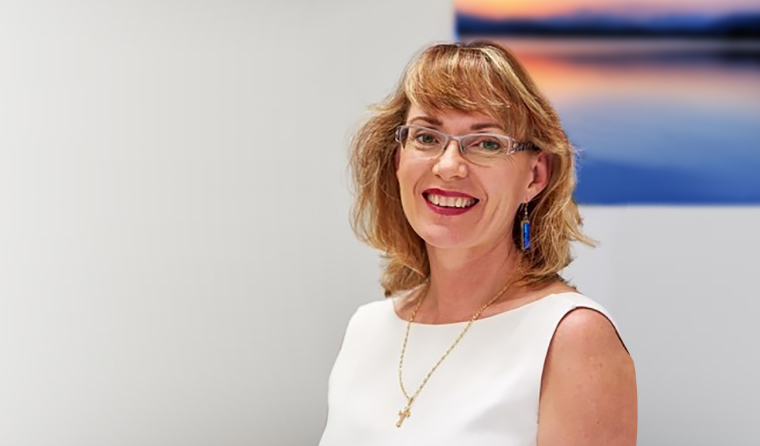News
Significant increase in stillbirth at a UK hospital during pandemic
But experts say there is little evidence to support the idea it may be happening in Australia.
 The incidence of stillbirth increased significantly at St George’s University Hospital in London during the pandemic.
The incidence of stillbirth increased significantly at St George’s University Hospital in London during the pandemic.
‘A four-fold increase in stillbirth is a very significant finding. I think it should ring alarm bells.’
That is Dr Alex Polyakov, a senior lecturer in the Department of Obstetrics and Gynaecology at the University of Melbourne and a consultant obstetrician, gynaecologist and fertility specialist at the Reproductive Biology Unit at the Royal Women’s Hospital in Melbourne.
He is talking to newsGP about a new research letter, published in JAMA Network on 10 July that found the incidence of stillbirth was significantly higher during the pandemic than the pre-pandemic period in a hospital in the UK.
Those findings were based on pregnancy outcomes measured at St George’s University Hospital in London in two periods: one, from 1 October 2019 to 31 January 2020 (the pre-pandemic group), and the other from 1 February 2020 to 14 June 2020 (the pandemic group).
The incidence of stillbirth in the pre-pandemic period was 2.38 per 1000 births compared to 9.31 per 1000 births in the pandemic period.
The authors note none of the pregnant women who experienced stillbirth had symptoms suggestive of COVID-19, nor did the postmortem or placental examinations suggest SARS-CoV-2 infection.
Regardless, they say this increased stillbirth rate may still be a direct consequence of SARS-CoV-2 infection.
‘Alternatively, the increase in stillbirths may have resulted from indirect effects such as reluctance to go to the hospital when needed (eg with reduced fetal movements), fear of contracting infection, or not wanting to add to the National Health Service burden,’ the authors wrote.
‘Changes in obstetric services may have played a role secondary to staff shortages or reduced antenatal visits, ultrasound scans, and/or screening.’
While Dr Polyakov was concerned by the results, he believes there may be confounding factors that could have influenced those outcomes.
For example, he says, more complex cases may have had their care transferred to that particular hospital during the pandemic.
Dr Polyakov is also keen to note he does not think such outcomes are happening in Australia.
‘From anecdotal evidence from working at a tertiary hospital and a fairly busy private practice, we haven’t observed such [a] major increase in stillbirth over the past few months,’ he said.
‘I think [those results] may not be applicable to Australia.’
Dr Wendy Burton, Chair of the RACGP Specific Interests Antenatal and Postnatal Care network, agrees.
She told newsGP the issues raised in the JAMA paper are important, but that it is too soon to say whether they represent an established trend or a statistical anomaly.
Either way, she does not believe Australian hospitals are seeing a similar rise in stillbirths.
Dr Burton says she asked obstetrician Dr Michael Beckman from Mater Mothers Hospital (MMH) in Brisbane, Australia’s largest maternity hospital, to review their data over the same time periods mentioned in the study.
‘He was able to report that, for comparable dates to the St George’s University Hospital in London, they have not observed any statistical differences in stillbirth at MMH,’ she said.
In fact, she says, Dr Beckman reported lower numbers of stillbirths in the period from February to June 2020 at MMH.
‘He does caution though, that the numbers are small and we need to look at larger population data, not individual hospital event rates,’ Dr Burton said.

Obstetrician Dr Alex Polyakov believes antenatal care should ideally continue unchanged irrespective of the COVID-19 pandemic.
Meanwhile, Associate Professor Jane Wharland, an international researcher and qualified midwife, is concerned about a potential rise in stillbirths here during the pandemic.
‘[I]t seems likely that if places like London and Scotland are noticing a spike [in stillbirths] that we are also experiencing a spike here in Australia,’ she said.
While Dr Burton does not think there has been an increased incidence of stillbirths here, she says one of the many public initiatives that was ‘sidelined’ due to the pandemic was the Safer Baby Bundle, specifically targeted to reduce the incidence of stillbirth in Australia.
‘Of the five targeted interventions, four are still able to be addressed regardless of changes to visit schedules during this COVID era – smoking, sleeping position, fetal movements and time of birth,’ she said.
‘The one we struggle with is fetal growth, which we do indeed need solutions for that feel safe and are safe.’
Despite being able to address fetal movements via telehealth, Dr Polyakov is also concerned about findings that pregnant women might be reluctant to attend antenatal appointments, or report changes in fetal movement, due to fear of COVID-19.
‘We need to advise women that any concerns they have should be raised and addressed immediately, especially in relation to decreased or absent fetal movements,’ he said.
Dr Burton shares that view.
‘I would encourage all GPs to be informed and to inform the women in their care of the risks of stillbirth and the importance of prompt action to modify risk, especially the message about seeking review with reduced foetal movements,’ she said.
Dr Polyakov harbours further concerns about the shift away from face-to-face appointments during the pandemic, and its potential effects on pregnancy outcomes.
‘You can only do so much via telehealth,’ he said.
‘For example, you can’t measure blood pressure and you can’t assess foetal movements or foetal heart rate with telehealth, and so this is something that needs to be kept in mind when we change the patterns of antenatal care.’
Dr Burton agrees telehealth has limitations.
However, she says it is common for pregnant women to not want to attend face-to-face appointments during the pandemic, especially in hospital settings.
‘I think women themselves don’t want to go into crowded places,’ she said.
‘Some women are quite happy to be at home and do telehealth. Some prefer it.’
Dr Burton points out telehealth is not the only option for antenatal care, saying community-based midwifery care and GP shared antenatal care offer the opportunity to see a health professional in a non-hospital facility.
‘There is still a need to have a safe space – clean, physically distanced, attention to who is in the waiting room – but by virtue of the lower throughput of patients, these should be safer places for women to attend,’ she said.

Dr Wendy Burton says pregnant women need to be reassured that the schedule for antenatal care has not changed, despite the shift towards telehealth.
Dr Burton believes utilising telehealth as the first port of call for antenatal care makes sense at the moment, especially as it allows for maintenance of the routine antenatal schedule.
‘Women need to be reassured that the schedule hasn’t changed,’ she said.
‘We stick to a schedule, so women still have the same number of visits at the same time and always with the proviso that if required, of course we will see her face-to-face.’
Dr Burton also says there are measures that can help offset the limitations of telehealth.
For example, she says her local hospital has purchased sphygmomanometers to lend or rent to patients so they can monitor their own blood pressure at home.
Pregnant women are also encouraged to weigh themselves at home and monitor their own growth and report back on concerns.
Furthermore, she says, rapid ultrasound scans at 34–37 weeks can be useful to assess growth and position.
Despite such measures, Dr Polyakov believes the routine schedule of antenatal appointments should ideally be kept at their usual intervals despite the pandemic.
‘And those appointments should really be face-to-face because otherwise there will be some women who will slip through the net and will have adverse events happen to them because they haven’t seen a doctor face-to-face for months,’ he said.
‘So my advice for [clinicians] who participate in shared antenatal care is to make every attempt to stick to the recommended appointment times or schedule, rather than doing it via telehealth or doing it less frequently.
‘My personal feeling is that because antenatal care is designed to minimise stillbirth and various other complications, it really should be done unchanged irrespective of the COVID pandemic.’
Dr Burton believes a mixture of telehealth and face-to-face appointments may be needed during the pandemic.
‘Personally, I have been splitting my consultations into telehealth first followed by face-to-face [now Queensland is in a low risk phase], which allows less time face-to-face while still having the video or telephone consultations which allow education and addressing of emerging concerns,’ she said.
Dr Burton says telehealth can be utilised to cover the ‘conversation’ part of the consult, and a brief face-to-face follow up ‘drop in’ meeting can then be arranged in which blood pressure, fundal height and position can be checked in person.
Rather than a blanket approach, Dr Burton says each case should be assessed individually.
‘I think it needs to be flexible and it needs to, as it always should, concentrate on the needs of the woman,’ she said.
‘Because there’s not one size that fits all.’
Log in below to join the conversation.
antenatal care COVID-19 stillbirths
newsGP weekly poll
How often do patients ask you about weight-loss medications such as semaglutide or tirzepatide?